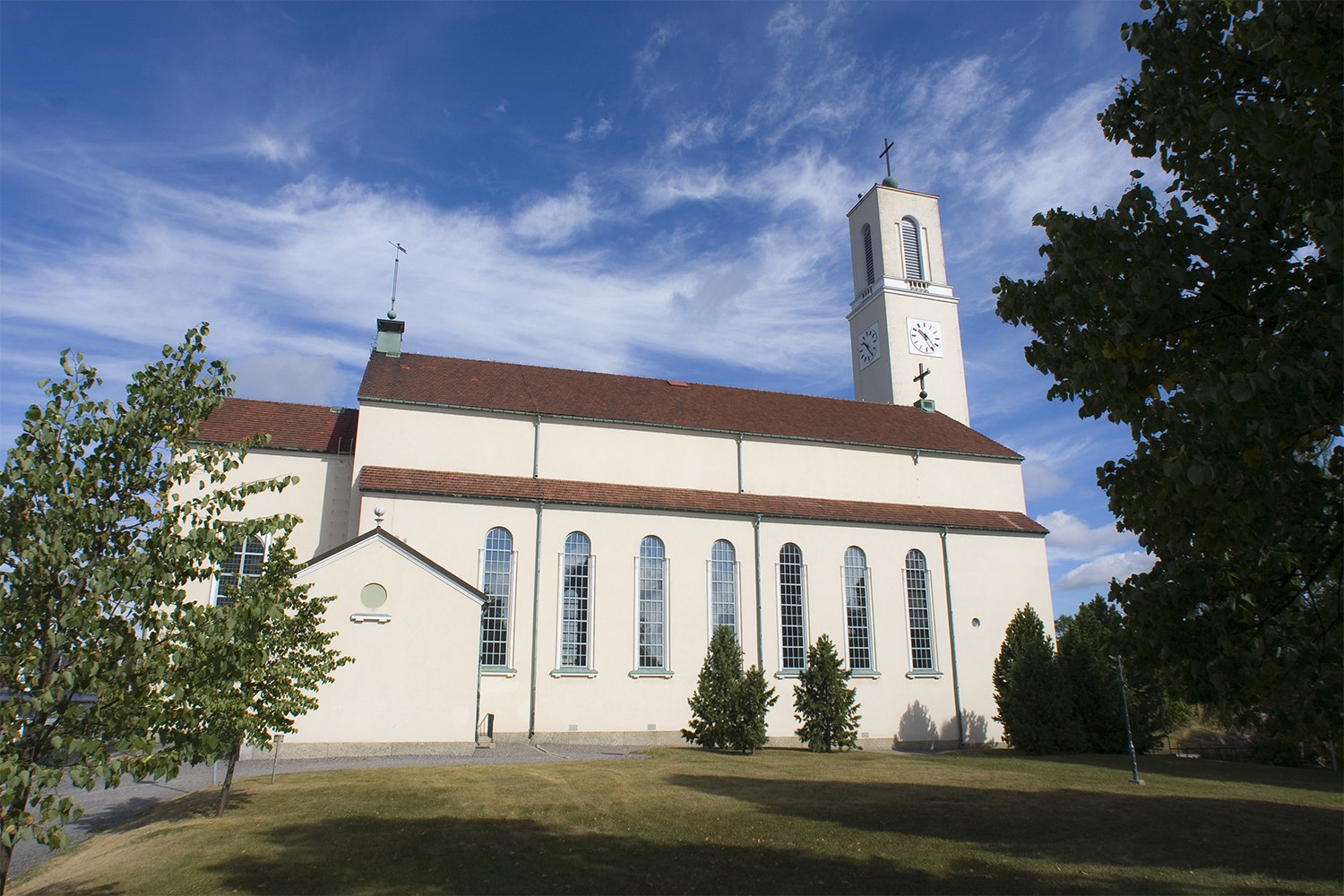Cookies
CookiesThe link opens in a new tab
The history of Martin's church is still quite short, but in its function of spreading the glory of God it also represents eternity. The Church has no patron saints but due to the date of its consecration, it is linked with the name of Martin Luther, the Reformer.
Martin's parish was founded in 1921 after which the parish council decided to build a church of its own. The church was consecrated on the 450th anniversary of the birth of Martin Luther, on the 12 th of November 1933. The designers of the church were the architects Totti Sora and Gunnar Wahlroos. The church represents architechtual functionalism.
Martin's church is a long church with three aisles with very narrow side aisles. The church has a functional and singular practicality of its own. The barrel-vaulting of the roof is one of the most outstanding features of the church.
The altar, the pulpit, and the roof are notable features of architect Sora's work. On the top of the pulpit, the architect has placed a crown. The same theme is featured as a decoration to the hymn list table. The architects have clearly thought of the church as a royal court chamber and for this reason the basic construction is reminiscent of a basilica. The artist Aarre Aaltonen has made five decorative sculptures for the pulpit.
Einari Vehmas and Karl Ingenius, artists from Turku, won the competition that was arranged for a work of art to decorate the altar wall. Their work is the most noteable detail of the church. The whole altar wall is covered with an "al secco" painting of the Saviour nailed to the cross with friends and officials at Golgatha. This massive work is 15 meters high and 9.5 meters in breadth. At the time of painting this was the largest painting of its type in the whole of Scandinavia.
Vehmas and Holvi painted the pictures on the arches in the nave. The upper one depicts the eye of God. On the arches there are symbolic pictures of the apostles and of a green clothed angel with a chalice in his hand. On the balcony of the organ gallery, the artists painted an advent scene.
Several years later, Einari Vehmas painted the sacristry window paintings showing scenes of the Saviour with a child on his arm, Bishop Henry, and Martin Luther.
The altar cloth was designed by Greta Skogster, the artist, and was presented to the church as a gift at the consecration ceremony by the parish sewing circle. The dominant feature of the altar cloth is pelicans: pelicans feeding their young with their own blood. This motif has been regarded as symbolic of the love of Christ.
The church has received a number of gifts from both private people and societies. The seven branch silver candelabrum on the altar is a gift from Martin's church choir and was made by a member of the choir, silversmith Emil Sivonen.
The church was in operation for a number of years unfinished, without an organ, church bells, or a clock in the spire. This was due to insufficient funds. A harmonium was used, until in 1936 the present organ was built by Kangasala organ factory. The 49-stop organ is of the so-called romantic orchestra organ type. The specification was designed by Sulo Muurikoski, long-time organist of the church. The tubular pneumatic action was electrified in 1981, and a modern Setzer combination action was installed in 2002.
The spire got its clock in the olympic year of 1952, and chimes in 1955. The casting of the bells was done by the Friis Brothers bell foundry.
Repairs and improvements to the church have been undertaken in several phases. Most recently, in 1980-81, the exterior and interior surfaces were repaired and repainted, some of the pews at the back of the church were removed, and the tower chapel was furnished, and entrances for the disabled were built.
In 1987, the Independence celebration year of Finland, the members of the parish council presented the church with a rememberance plaque in honour of the members of the congregetion who were killed in the 1939-44 war. The memorial tablet honours 181 names.

CookiesThe link opens in a new tab